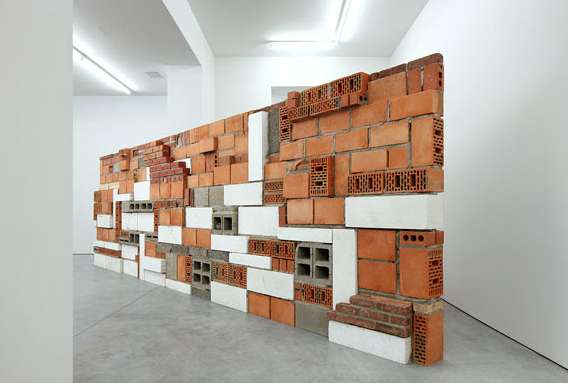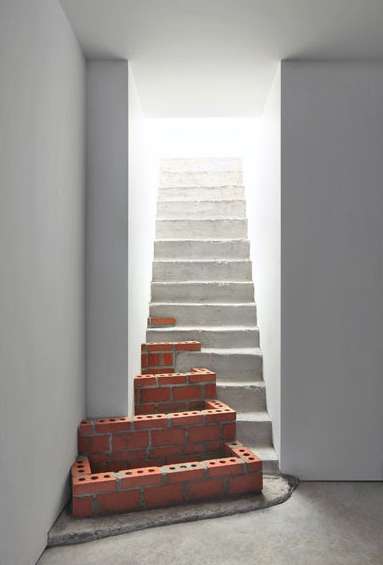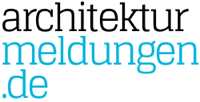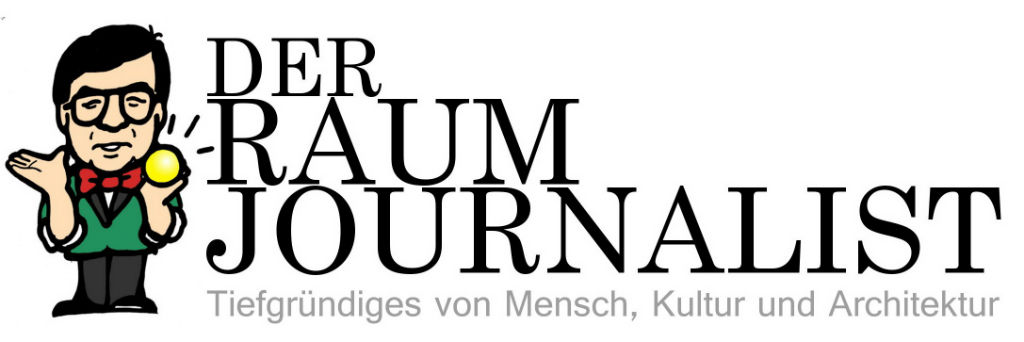side walls |┬ĀFILIP DUJARDIN in Antwerp
A┬Āphotographer that builds, a builder that takes photographs, or an architect in disguise? The artist identity of Filip Dujardin (b. 1971, Ghent) encompasses and at the same time rejects all of these descriptions. Rather than who he is, the artist himself prefers to describe what he is engaged in: a multimedia exploration of the essence of architecture.

Filip Dujardin,┬Āthe wall, 2016 (in situ installation, bricks
dimensions variable)┬Ā┬® Filip Dujardin / Van der Mieden Gallery
Filip Dujardin
side walls
September 4 ŌĆō October 22, 2016
Van der Mieden Gallery
Antwerp, Belgium
PR Info _ A┬Āphotographer that builds, a builder that takes photographs, or an architect in disguise? The artist identity of Filip Dujardin (b. 1971, Ghent) encompasses and at the same time rejects all of these descriptions. Rather than who he is, the artist himself prefers to describe what he is engaged in: a multimedia exploration of the essence of architecture. Dujardin began this visual research in 2007 with the series Fictions. This ongoing series consists of photo montages made up partly of images of existing buildings and partly of digital representations of buildings that ŌĆō with their bricked-shut windows and doors, floating components and dysfunctionally elongated structures ŌĆō are somewhere on the border between the familiar and the alienating, flirting with surrealism and hyperreality. In this exhibition, pixels are swapped for red bricks as Dujardin leaves behind the safe virtual world, with its unlimited possibilities, to confine his research to the uncompromising parameters of reality: architecture as a sculptural form in time and space.
Neutral, modest, inconspicuous, constant: the gallery space may present itself as an impartial backdrop for the presentation of objects but Dujardin is an architectural relativist through and through; for this artist, spatial arrangements are never absolute. With his brick-and-mortar interventions he makes suggestions for poetic adjustments to the architectural structure of the building, guides our gaze to unnoticed nooks, lines, and textures, and encourages us to reflect on what was, what is, and what could be. Dujardin is averse to the notion of ŌĆśdesigningŌĆÖ: while he respects the innate value and forms of architectural archetypes and typologies such as doors, walls and staircases ŌĆō ancient elements that first served their purpose 12,000 years ago ŌĆō in his hands they also undergo a subtle shift in context. Stripped of their functionality and identity as load-bearing elements, they are unceremoniously turned back on themselves, Dujardin placing an ŌĆśabnormalŌĆÖ (and consequently absurd, humoristic) filter on the ŌĆśnormalŌĆÖ.
Whereas his photo collages have been known to exhibit hints of locality, with his in-situ installations the artist seeks out the universal. The brick ŌĆō the anonymous basic element of our society, with the potential to become anything ŌĆō is assigned the lead role. To build the two-by-six-metre wall in the central gallery space, Dujardin bought a selection of the bricks most commonly used in Flanders from his local DIY store. The white, grey and red building blocks meet clumsily in this wild, anarchistic wall to create a fragmentary composition of linear relationships. Here Dujardin brings the outside inside and presents a visual metaphor for the diversity of the city: all of society agglomerated in one wall. With this he offers a comment on the positive facilitating role that architecture is often seen as having, while also emphasizing the hindering aspect of it: architecture as an obstacle. Dujardin sees architecture as a buffer between two places, requiring one to undertake a certain action (to go through, over or under something, for example) in order to restore contact between oneself and the place. In this space, the architectural elements themselsves are often in conflict with one another: the room for movement offered by a door ŌĆō in itself a barrier ŌĆō becomes even more limited by an obstructive wall and a redbrick staircase crawls like some kind of parasite out of its cement-based counterpart. Which staircase came first?
Dujardin likes to provoke questioning with contrasts of form and material, nature and culture, reality and fiction. The latter pair is found not only in his images but also in his process: his spatial interventions are immortalised through photography. When Dujardin, the ŌĆśarchitectural photographerŌĆÖ, has ŌĆśfinallyŌĆÖ started to build, he circles back by photographing his constructions. From fiction to reality and from reality back to fiction: it is a cycle by which his quest to distil the essence of architecture becomes even more multifarious. ŌĆśWhat is architecture?ŌĆÖ he asks himself, but also, ŌĆśWhat is an image? What is a representation of architecture?ŌĆÖ, and ŌĆśHow is architecture experienced through this particular medium?ŌĆÖ These questions loom larger, the more that the different possible viewing experiences ŌĆō each as layered as DujardinŌĆÖs constructions ŌĆō overlap one another, whether they, as tangible sculptural forms, claim a presence in the space or not.
Info + illus. courtesy Van der Mieden Gallery










